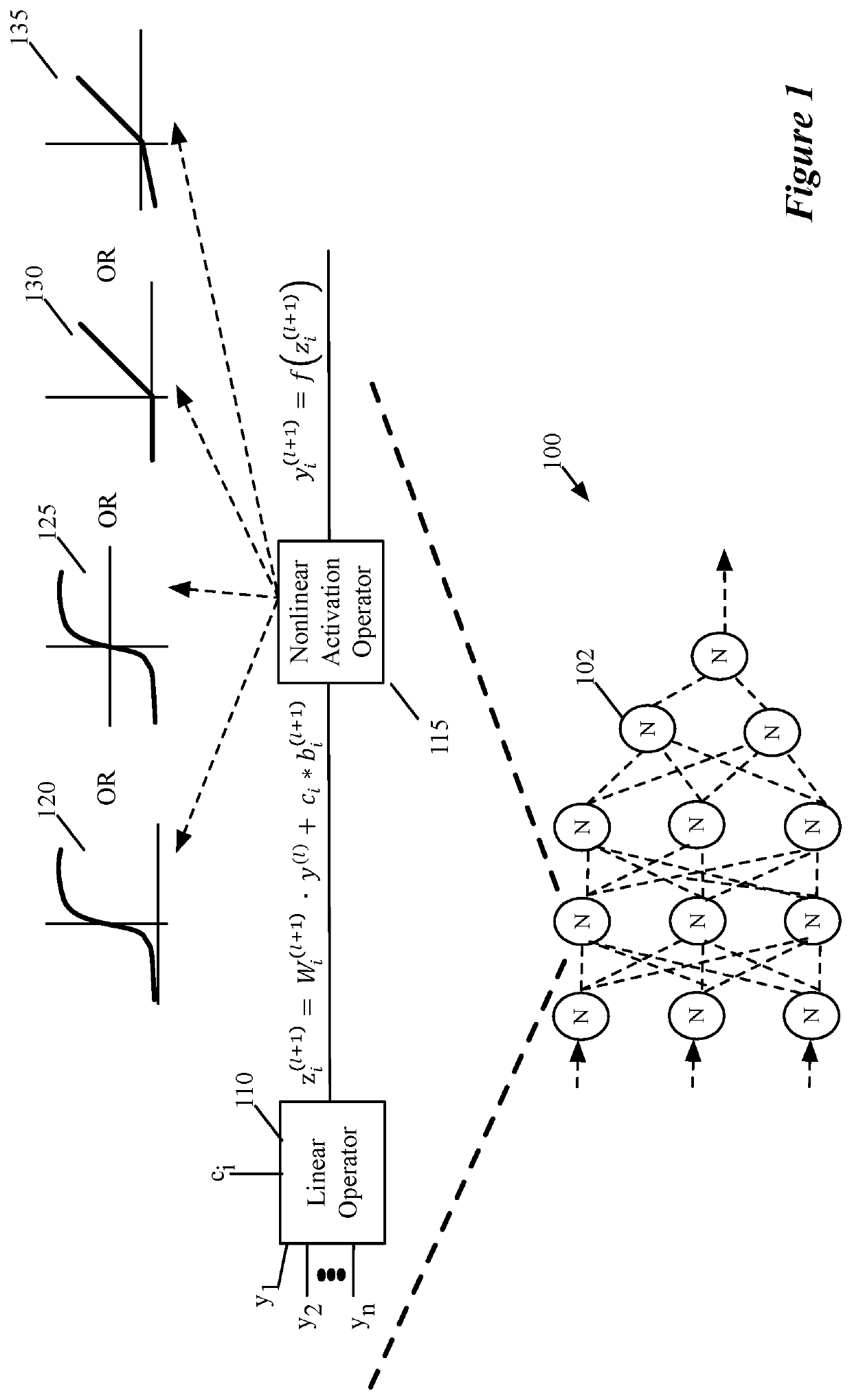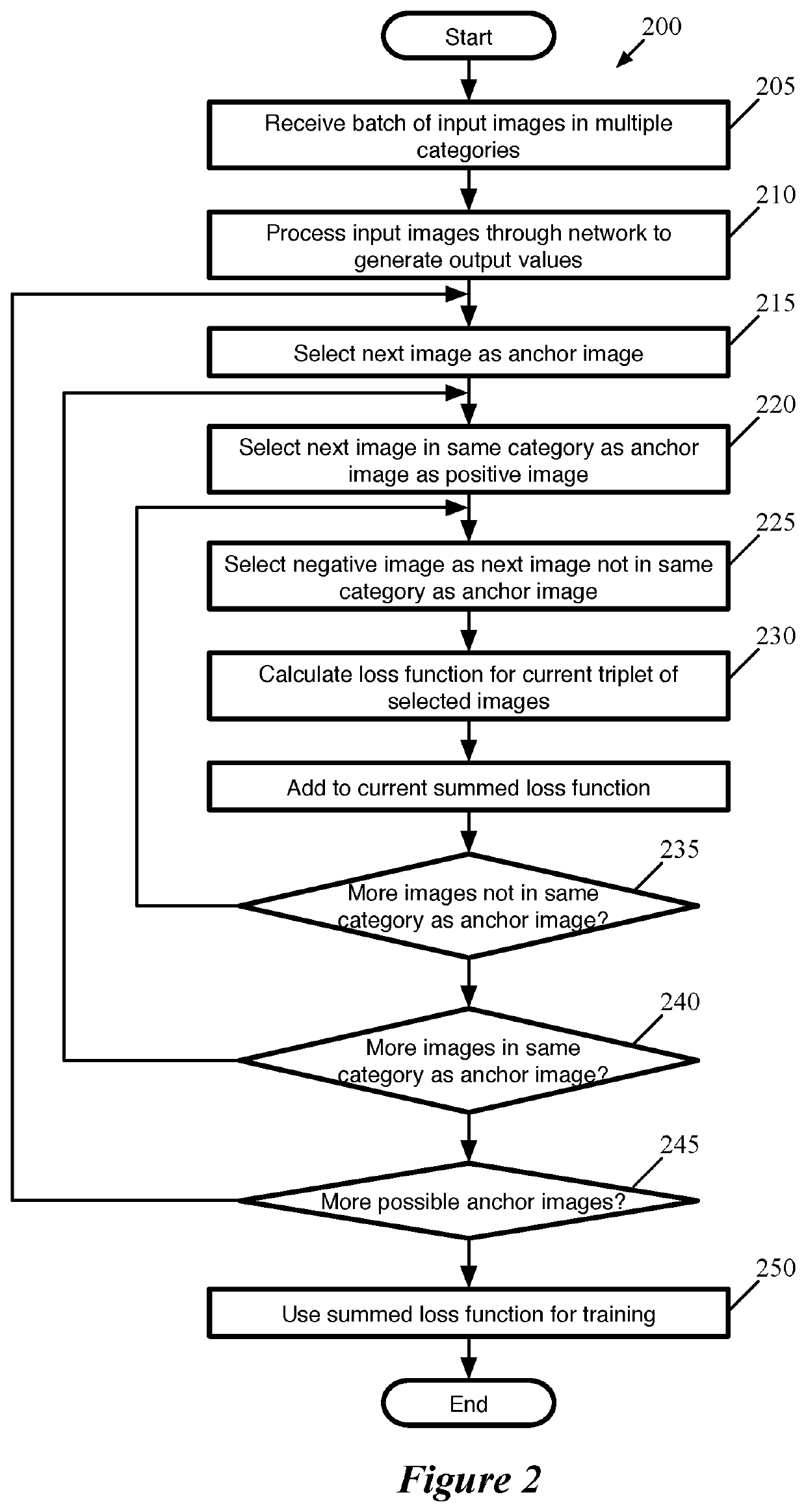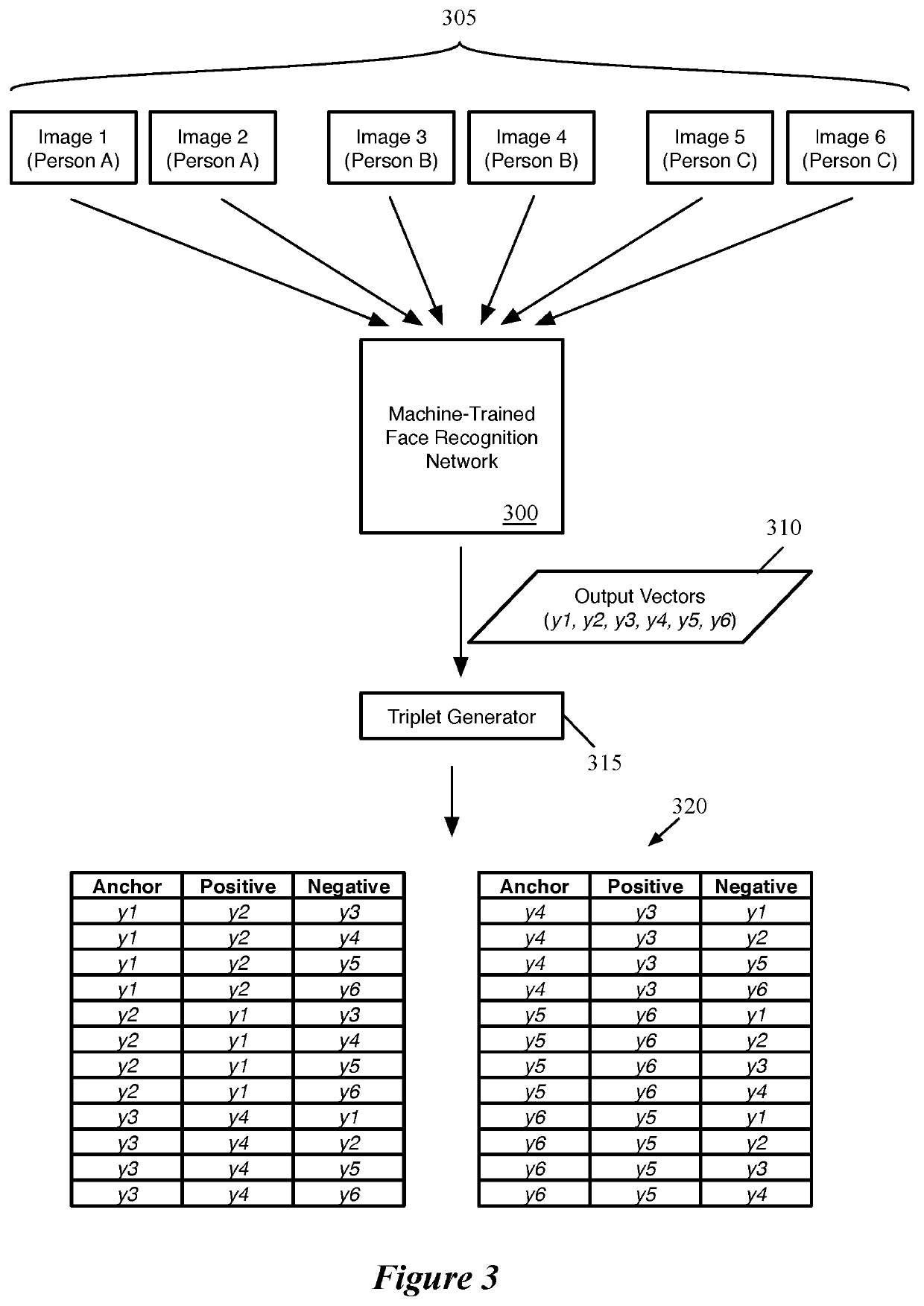Probabilistic loss function for training network with triplets
- Summary
- Abstract
- Description
- Claims
- Application Information
AI Technical Summary
Benefits of technology
Problems solved by technology
Method used
Image
Examples
Embodiment Construction
[0020]Some embodiments use techniques for training a machine-trained network (e.g., to perform image categorization or face-recognition) using groupings of training items, that increases test accuracy and decreases training time. Some embodiments use large batches of training items, with multiple training items per category, in order to achieve a number of training item groupings that increases superlinearly as a function of the number of training items propagated through the network. For instance, rather than propagating through the network a single set of three training items with (i) an anchor training item, (ii) a positive training item of the same category as the anchor, and (iii) a negative training item of a different category than the anchor, some embodiments propagate multiple training items for each of multiple categories (e.g., faces of multiple people) through the network to generate output values for each of the training items, and construct as many triplets (or other g...
PUM
 Login to View More
Login to View More Abstract
Description
Claims
Application Information
 Login to View More
Login to View More - Generate Ideas
- Intellectual Property
- Life Sciences
- Materials
- Tech Scout
- Unparalleled Data Quality
- Higher Quality Content
- 60% Fewer Hallucinations
Browse by: Latest US Patents, China's latest patents, Technical Efficacy Thesaurus, Application Domain, Technology Topic, Popular Technical Reports.
© 2025 PatSnap. All rights reserved.Legal|Privacy policy|Modern Slavery Act Transparency Statement|Sitemap|About US| Contact US: help@patsnap.com



